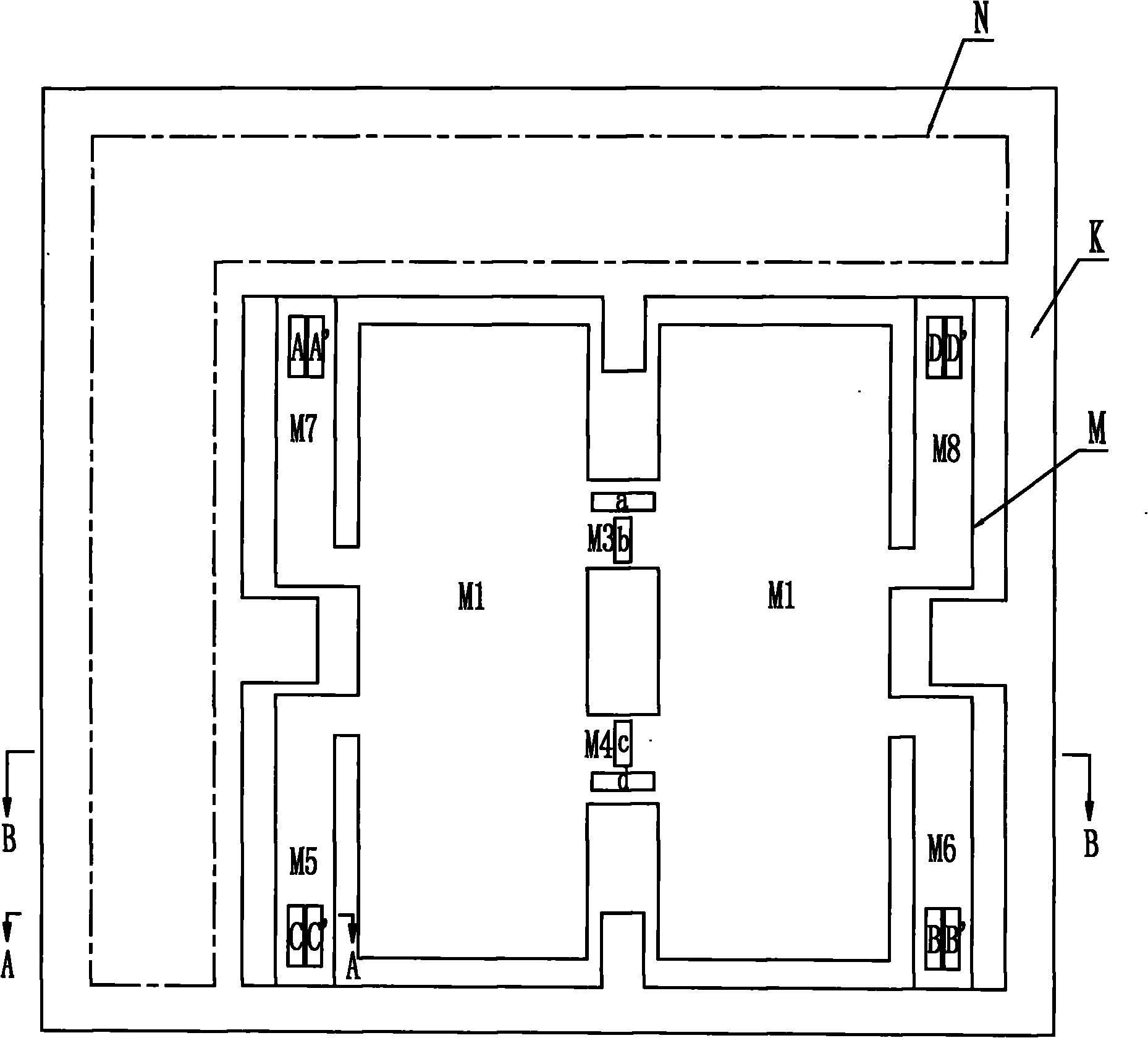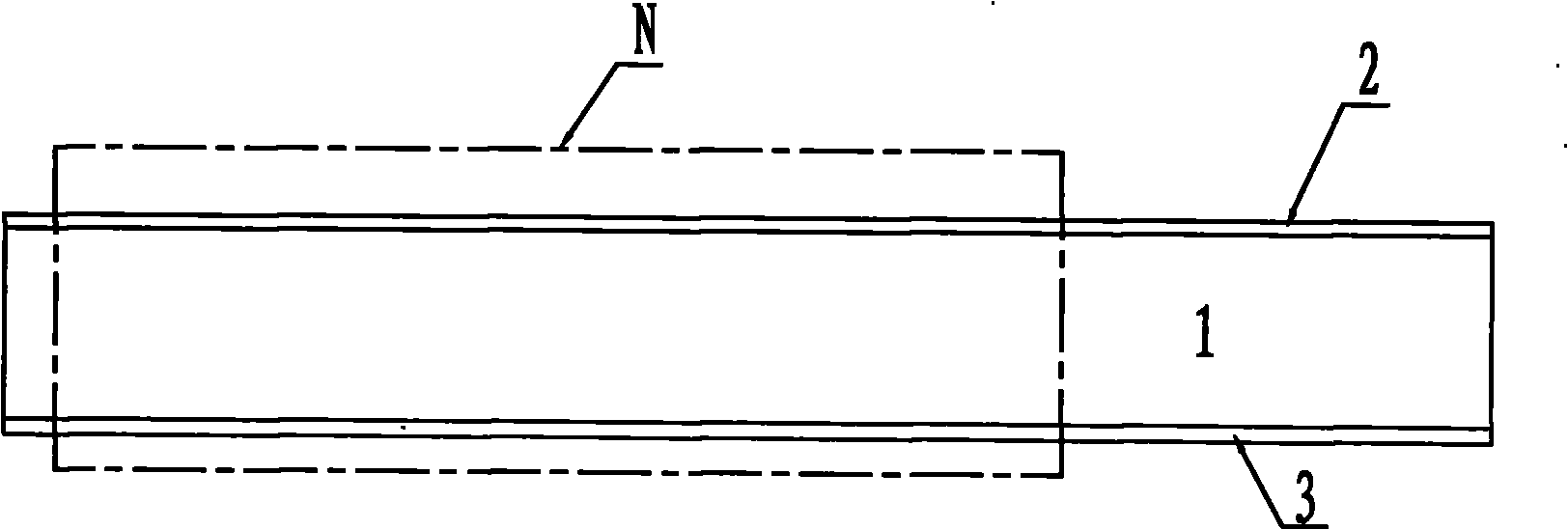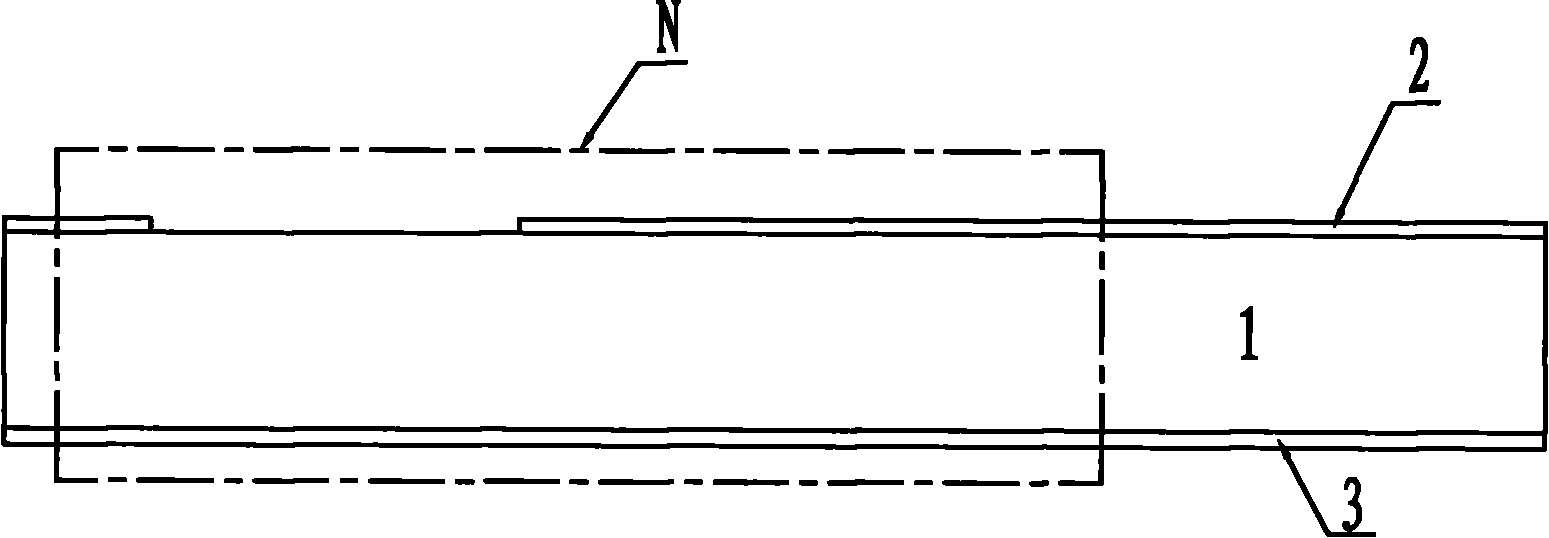Piezoresistive monolithic integrated tri-axial acceleration sensor and manufacturing method thereof
A monolithic integration, axial acceleration technology, applied in the direction of acceleration measurement using inertial force, piezoelectric/electrostrictive/magnetostrictive devices, impedance network, etc., can solve the problem of large volume, low accuracy of vector measurement, and misalignment of centroids And other issues
- Summary
- Abstract
- Description
- Claims
- Application Information
AI Technical Summary
Problems solved by technology
Method used
Image
Examples
specific Embodiment approach 1
[0036] Specific implementation mode one: combine figure 1 and Figure 20 Describe the present embodiment, the piezoresistive monolithic integrated three-axis acceleration sensor of the present embodiment is integrated by a chip, and the chip is divided into fixed support frame area K, circuit area N and sensing area M; Sensing area M is formed by the first Mass M1, second mass M2, first intermediate beam M3, second intermediate beam M4, first to fourth L-shaped sensitive beams M5, M6, M7, M8 and first to twelfth piezoresistors A, Composed of A', B, B', C, C', D, D', a, b, c, d; the first mass M1 and the second mass M2 are arranged symmetrically along the longitudinal central axis of the sensing area M, The two sides between the first mass M1 and the second mass M2 are connected by two first intermediate beams M3 and the second intermediate beam M4, and the two sides between the first mass M1 and the second mass M2 Two L-shaped sensitive beams are respectively arranged on the...
specific Embodiment approach 2
[0037] Specific implementation mode two: combination figure 1 and Figure 20 This embodiment is described. The difference between this embodiment and the first embodiment is that two longitudinal limit blocks are respectively provided in the two gaps between the first mass M1 and the second mass M2. Other compositions and connection methods are the same as those in Embodiment 1. The purpose of setting two longitudinal limit blocks is to realize the overload protection for the acceleration in the x-axis direction.
specific Embodiment approach 3
[0038] Specific implementation mode three: combination figure 1 and Figure 20 Describe this embodiment, the difference between this embodiment and specific embodiment 1 or 2 is that the gap between the first L-shaped sensitive beam M5 and the second L-shaped sensitive beam M6 is different from the third L-shaped sensitive beam M7 and the fourth L-shaped sensitive beam M7. Two transverse limit blocks are respectively arranged in the gaps between the type-sensitive beams M8. Other compositions and connection modes are the same as those in Embodiment 1 or 2. The purpose of setting two lateral limit blocks is to realize the overload protection for the acceleration in the y-axis direction.
PUM
| Property | Measurement | Unit |
|---|---|---|
| Thickness | aaaaa | aaaaa |
| Thickness | aaaaa | aaaaa |
| Thickness | aaaaa | aaaaa |
Abstract
Description
Claims
Application Information
 Login to View More
Login to View More - R&D
- Intellectual Property
- Life Sciences
- Materials
- Tech Scout
- Unparalleled Data Quality
- Higher Quality Content
- 60% Fewer Hallucinations
Browse by: Latest US Patents, China's latest patents, Technical Efficacy Thesaurus, Application Domain, Technology Topic, Popular Technical Reports.
© 2025 PatSnap. All rights reserved.Legal|Privacy policy|Modern Slavery Act Transparency Statement|Sitemap|About US| Contact US: help@patsnap.com



